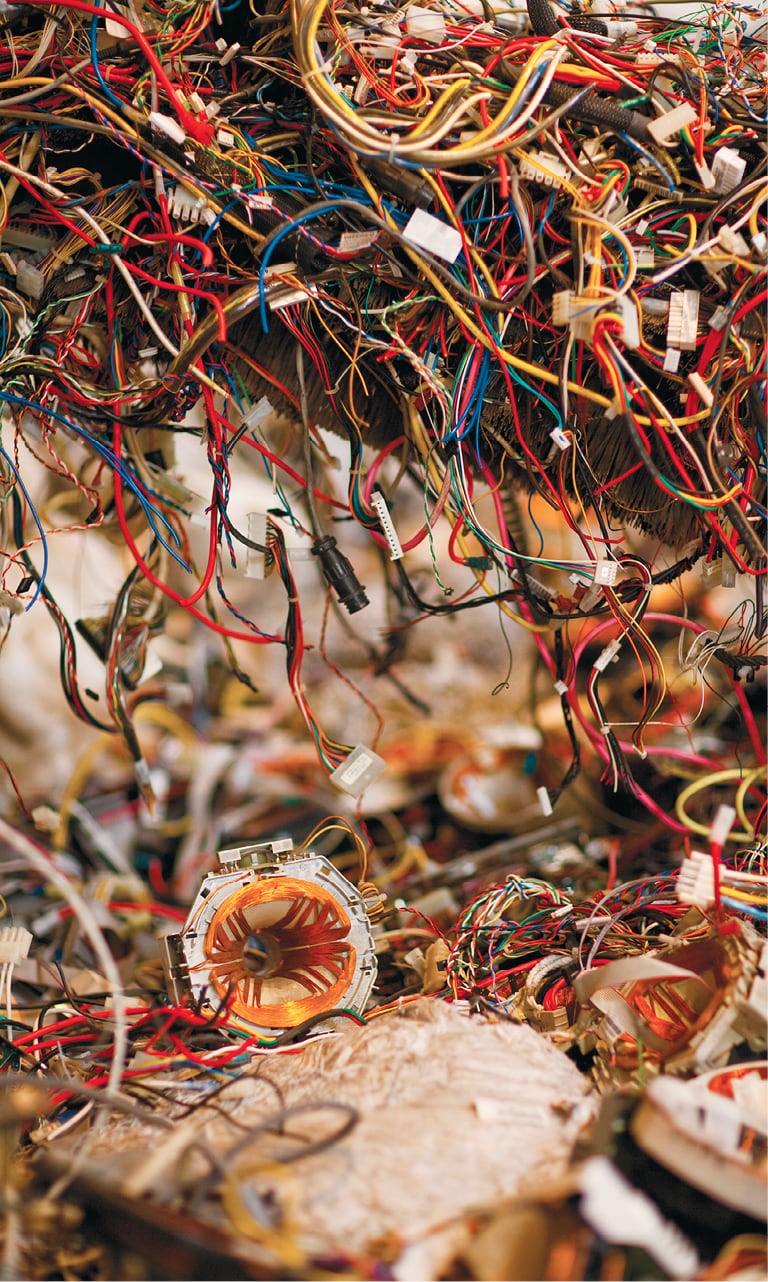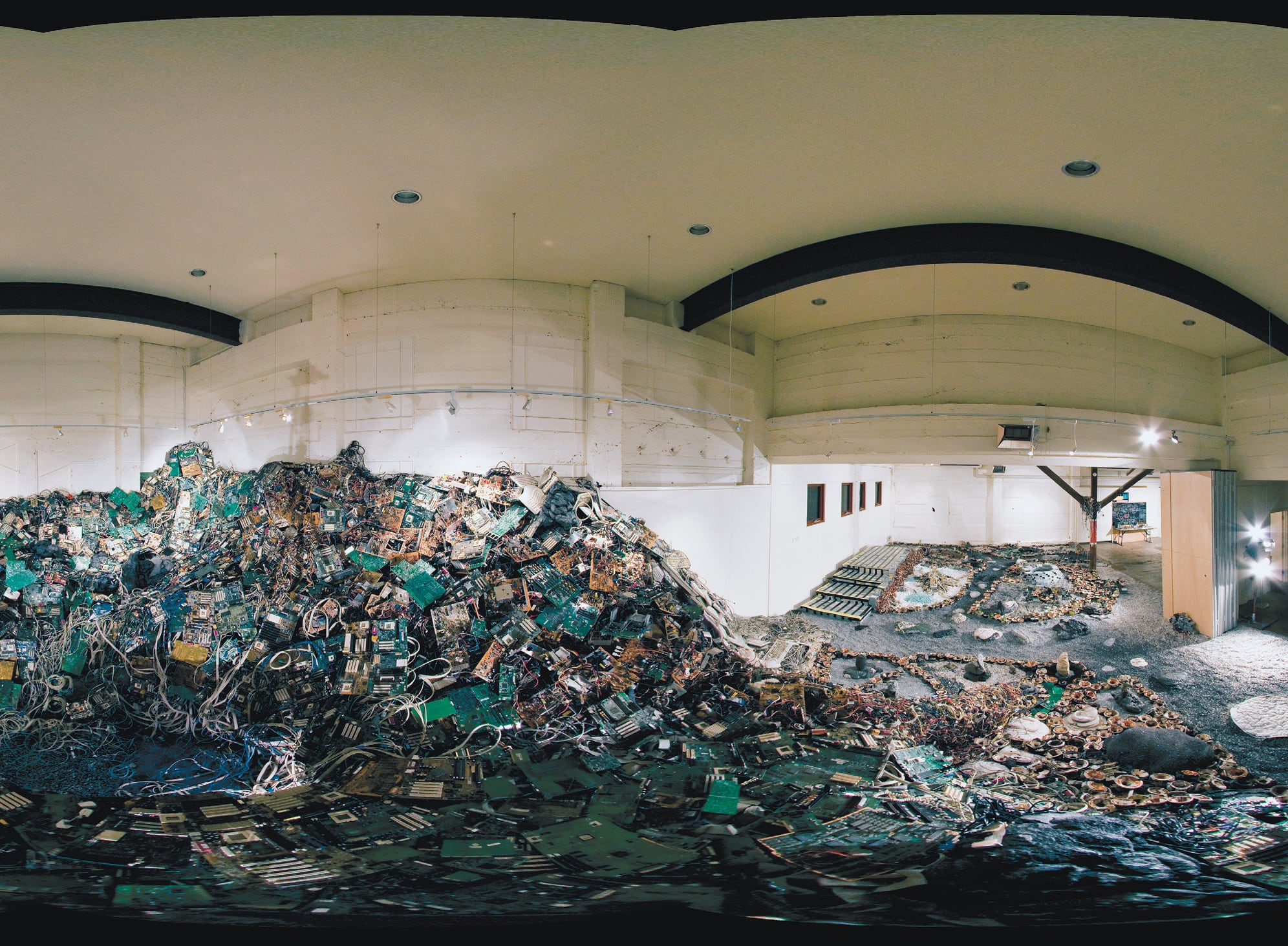
TS2
Slow Art Collective
Incinerator Arts Complex, Moonee Ponds
5–13 September 2009
Focusing on issues of sustainability, the Slow Art Collective presented itself as a group of canny gleaners at its inaugural exhibition, TS2 (Transfer Station 2). Utilising in-kind sponsorship, the collective networked extensively with a number of recycling services to bring over 15 tonnes of ‘e-waste’ to the Moonee Valley Transfer Station for use in an installation at the adjacent Incinerator Arts Complex. The resulting artwork formed an elaborate -futurescape made from a vast array of electronic detritus, which was combined with a cyclic soundtrack to suggest a living, pulsing ecosystem.
Founded in 2008 by Tony Adams, Chaco Kato, Ash Keating and Dylan Martorell, the Slow Art Collective is clearly a project driven by utopian concerns. At TS2, the process of sourcing found materials for an installation that would ‘go back to zero’ at the end of its lifespan, spoke strongly of the artists’ wish to minimise the material impact of their practice. Sprouting green shoots of plant growth in amongst its plastic excess, the laboriously sculpted garden of blinking computer parts optimistically suggested that such a cyclic return may indeed also be possible at an extra-artistic level.
Intending to create work that exists outside the usual temporal, economic and material constraints of the art market, it is the collective’s aim to disseminate its -practice via a process of slow circulation that may, in turn, effect a number of new connections and relationships in the broader social sphere. Having extended an invitation to the local community to contribute their own disused electronic materials to the installation, the Slow Art Collective also encouraged their audience to observe the gradual construction of TS2 over a period of several weeks. The installation was overtly defined as a durational experience — rather than a finished artwork — to create a further avant-garde entanglement of art and life. By creating an intervention that might slow the pace of material and artistic consumption — and cause the viewer to reflect upon issues of sustainability — the installation extended beyond a mere reiteration of the self-contained microtopia that is the hallmark of relational aesthetics. TS2 instead adopted an affective stance reminiscent of 1970s community initiatives such as the neighbourhood learning exchange. Importantly, this mode of exchange was extended to -include a blog that recorded each generative stage of the installation, while a number of small events aimed at further initiating a sphere of open-ended engagement between artwork and audience — such as the composting workshops run by Chaco Kato.
The conceptual impact of the TS2’s utopian drive was broadened by the manner in which the heaving pile of disused electronic materials intimated the rapid rate at which late capitalist society accumulates waste, leaving a trail of obsolescent devices in its wake. Here, the Fullerian theory of ephemeralisation — with its emphasis on the role that technology might play in creating dematerialised frameworks for an ever-improved standard of living — was contradicted by the sheer physical weight of the installation, and the obvious reliance of its components on finite recourses. Following this line of thought, it is important to question the Slow Art Collective’s ability to enact a true return to ‘zero’ — especially when we consider the damage done to the landscapes from which these materials actually originate in the context of a global electronics industry. Similarly, it is also important to acknowledge the vast amount of e-waste that is shipped to developing countries — subverting the possibility for contemporary communities to engage in localised, sustainable circuits of waste management. Ultimately though, the manner in which TS2 raised such questions indicated an effective visual representation of the current global debates on sustainable material consumption.

